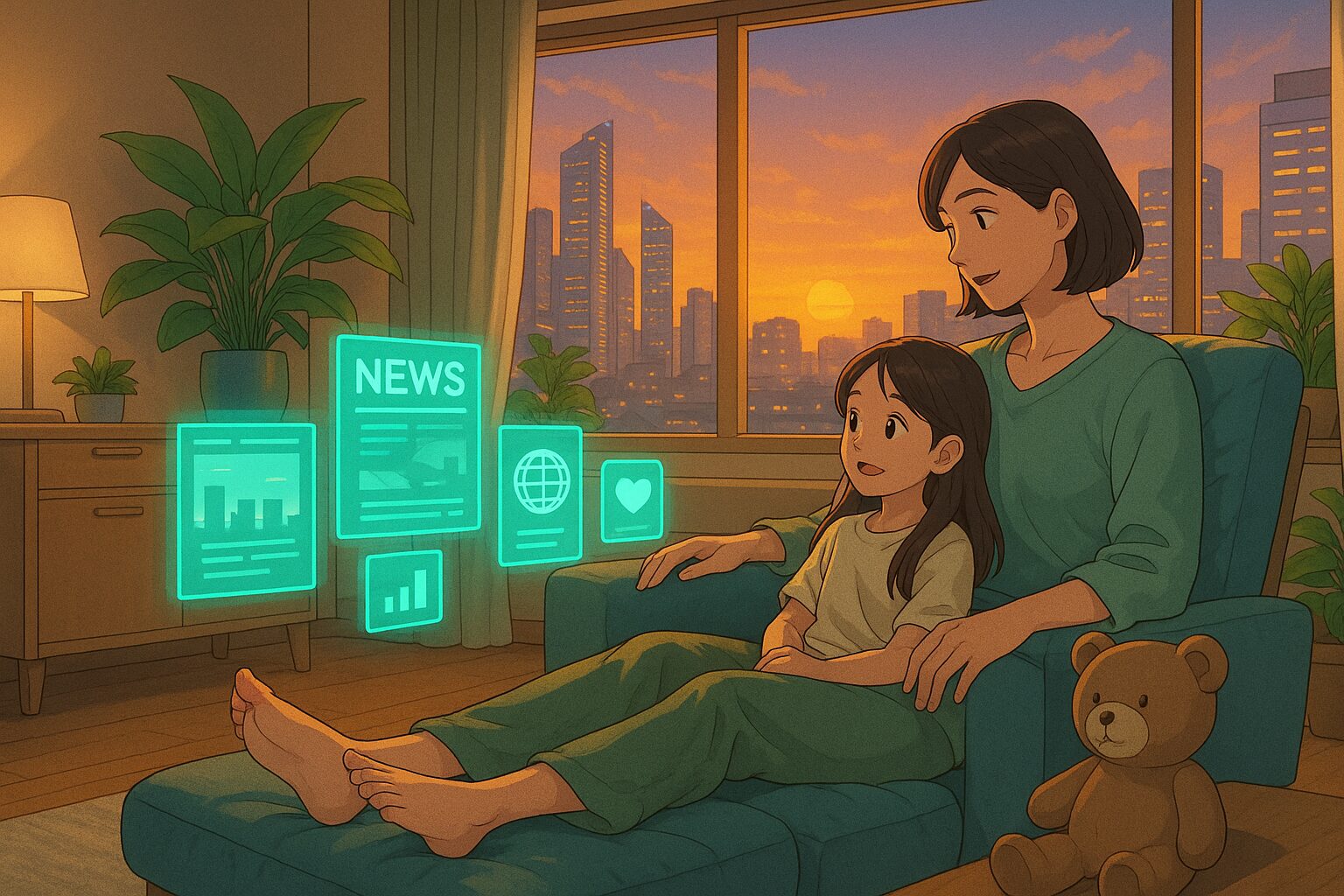The Tokyo Metropolitan Government has announced its policy to introduce Generative AI in all public schools. With AI making its way into the learning environment of children, there is a significant potential for changes in education and home learning. If this trend continues, how should we, as parents, engage with our children?
1. Today’s News: What’s Happening?
- Source:
https://www.konicaminolta.jp/business/information/release/250512.html
Simple Summary (in easy Japanese understandable even by high school graduates):
- Tokyo will introduce the generative AI service “Tokyo Public AI” in all 256 public schools
- Aimed at approximately 160,000 students and teaching staff
- A system equipped with features for safe use and educational settings
2. Changes in the Era Behind It
Advancements in Digitalization of Education, AI as a Learning Partner
In the educational field, the introduction of digital technology is progressing with the aim of optimizing individual learning and reducing the workload of teachers. Generative AI is being utilized as part of this, starting to be used for creating teaching materials and providing learning support.Potential Changes in Children’s Learning Styles
With the introduction of AI, children will be able to learn at their own pace and deepen their understanding through dialogues with AI. This is expected to diversify learning styles and content.Changes in Parental Involvement are Also Necessary
In an era where children learn using AI, parents will need to understand the characteristics and limitations of AI and find new ways to support their children’s learning.
3. IF: What Will the Future Look Like If This Continues?
Hypothesis 1 (Neutral): A Future Where AI Becomes a Part of Learning
In school education, generative AI will be used daily as a tool for creating teaching materials and learning support. This will increase efficiency in teachers’ duties and provide more personalized learning for children.Hypothesis 2 (Optimistic): A Future Where AI Promotes Creative Learning
By leveraging generative AI, children will be able to engage in exploratory learning based on their interests and curiosities. Through dialogues with AI, they will gain new ideas and perspectives, fostering their creativity.Hypothesis 3 (Pessimistic): Over-Reliance on AI Could Deteriorate Learning Quality
Excessive dependence on AI may hinder the development of children’s critical thinking and judgment skills. There are also concerns that their ability to discern the truth of information and opportunities for learning through dialogue with others may decrease.
4. Questions to Discuss at Home (Parent-Child Dialogue Tips)
| No | Sample Questions | Aim |
|---|---|---|
| 1 | If you were to study with AI at school, how would you feel? | Imagination / Awareness of Choice |
| 2 | What do you think is the difference between AI and a teacher? | Understanding Learning Styles |
| 3 | What would you do if AI said something incorrect? | Considering the Reliability of Information |
5. One Action You Can Take at Home
- Try Observing: Look for instances in daily life where AI is being used (e.g., smart speakers, translation apps, etc.)
- Try Drawing: Together, parent and child can draw what future classrooms or learning environments look like.
6. Summary: Preparing for 10 Years Ahead to Make Choices Today
The introduction of generative AI holds the potential to significantly change the nature of education. As parents, it is essential to understand the benefits and limitations of AI and to support the development of children’s ability to learn independently. Let’s actively discuss the future of learning at home and think together.
What kind of future do you envision? Please share it on social media or let us know in the comments.








